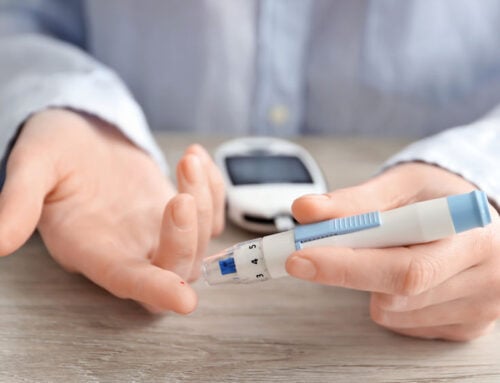Are You Ready To Give Finger Sticks A Rest?
Regular blood sugar checks are an essential tool in a diabetic patient’s arsenal. People with diabetes will have a glucose level target based on weight, health, and other risk factors. On average, patients should try to maintain an 80-130mg/dL blood sugar range before meals. Finger sticks are considered the most efficient way to check blood sugar levels daily between routine A1C tests. However, this method can be challenging and downright frustrating. Thanks to advancements in medicine and technology, there are some excellent alternatives to monitoring blood glucose patients can try.

How do finger sticks help?
Regular blood glucose monitoring helps patients avoid the side effects of high or low readings. The finger stick method uses a small lancet that takes a blood sample from the end of the finger. The blood sample goes on a thin strip which is then read by a blood glucose monitor. The monitor gives valuable information like glucose and ketones levels. These readings help diabetic patients understand glucose levels after meals or medication. From there, the necessary action, like taking insulin, can happen safely.
Pros and cons
The finger stick method is renowned for speed and accuracy. Patients have a good idea of current glucose levels in just a few seconds. This is also a more cost-effective option, though the price of test strips can add up and are not interchangeable by brand. However, a major complaint is pain and discomfort from continuously lancing the fingertips, which can also lead to calluses. Over months or years, many patients do not want to use this method anymore. Furthermore, blood sugar is not a static measurement, so the finger sticks can only read that moment in time. For instance, a stressful moment can change blood sugar levels soon after the last test.
Consider a continuous glucose monitor
Is there a way to avoid constant finger pricking? One ingenious method is continuous glucose monitoring (CGM). The CGM method uses a patch with a sensor attached to the upper arm. The sensor provides periodic information using fluids that the body naturally secretes. CGM can provide updates every 5 minutes through an external device. Today, most CGM systems work with apps that connect to a smartphone. Patients can also set alerts so the device signals when blood sugar is abnormally high or low.
Implantable glucose monitors
A common complaint on CGM is the patch can fall off. The patch can sometimes get exposed to elements, leading to inaccurate readings. Recently, scientists have developed implantable glucose monitors. These are small transmitters the size of a pill that a doctor inserts just below the skin. The transmitter uses the same body fluids to provide continuous glucose monitoring to a sensor on the skin. The sensor then provides detailed information on blood sugar levels via an app. Both implanted and sensor CGMs give granular, accurate information but could be more costly over time.
No more finger sticks
Finger sticks are arguably the most stressful part of diabetes monitoring. While effective, the months of discomfort in the fingertips can be frustrating. However, an investment in alternative methods, like CGM, can eliminate the need for lancing the finger. As the technology evolves, patients may no longer have to take blood or surgically implant transmitters. Until then, these other options can help remove the finger stick.




